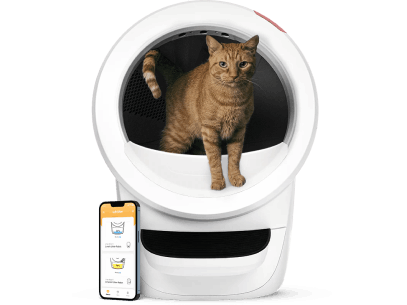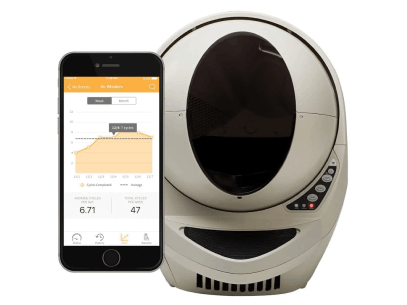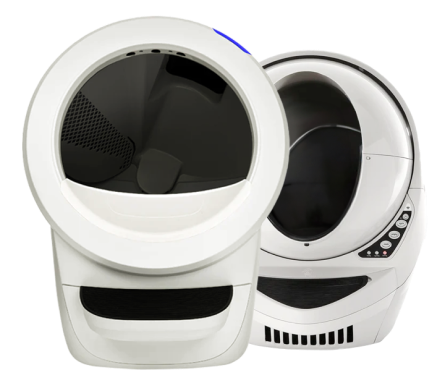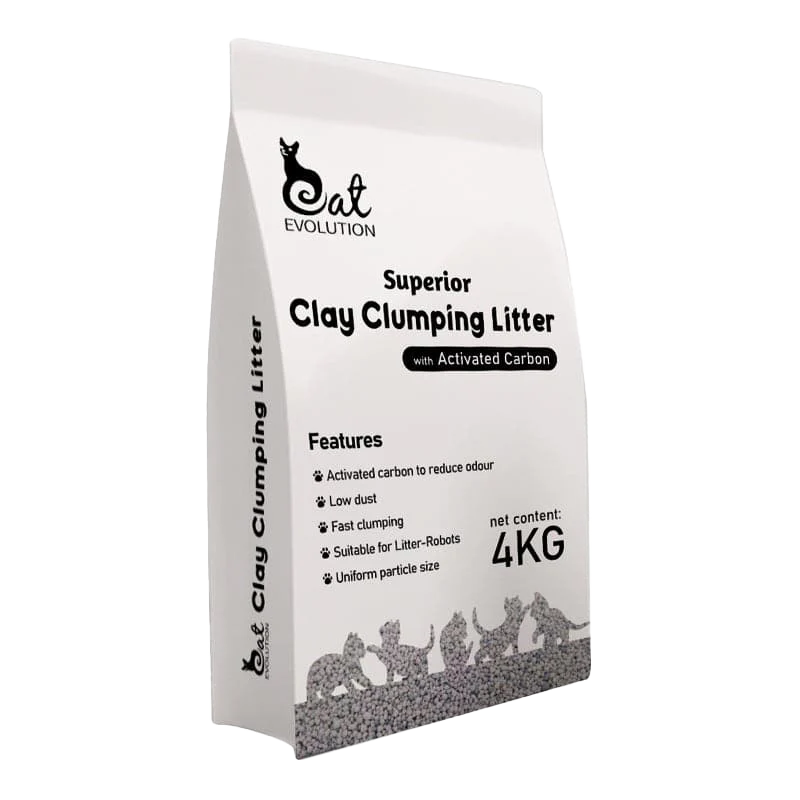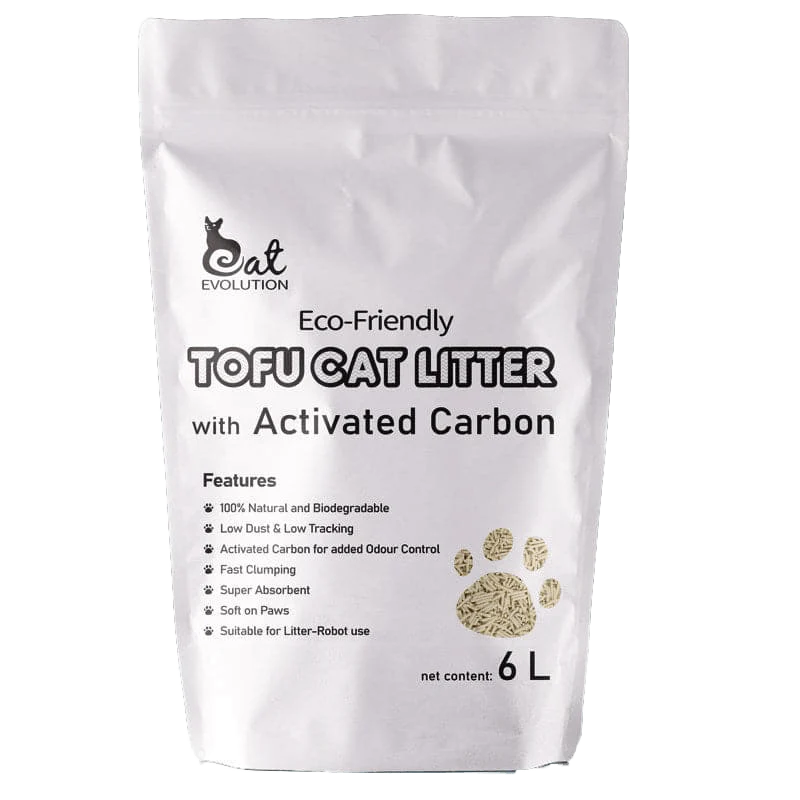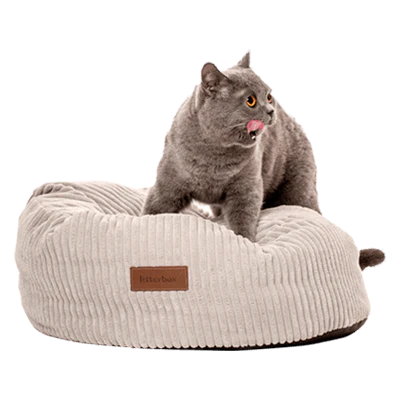A General Look at Cleaning the Litter-Robot III Open Air
Litter-Robot III Open Air is made with standard plastics. The black liner inside the globe is made out of PVC. We recommend cleaning the Litter-Robot as needed, noting that number of cats, climate, and litter used will dictate how often is necessary. Simply wiping it down with a damp paper towel outside and if wanted, in the globe, will keep your Litter-Robot looking new and clean on the outside, but there is also some deeper cleaning needed from time to time. Using a mild detergent is recommended, and always rinse well and dry completely before re-assembly. Do not use bleach on the Litter-Robot as this can cause the plastic to degrade. Common household cleaners can be used, again, avoid bleach and do not spray directly onto the Litter-Robot.
The globe should be fully cleaned as needed, minimum three times a year. The base can be wiped down with a dry or damp cloth as needed, usually when you clean the globe. Turn off the Litter-Robot and completely unplug from the wall prior to any deep cleaning.
There are no electronics in the globe or waste drawer so you can soak these a tub or hose them down. We like to use a soft dustpan type brush to easily access the inside of the Globe. Once you're finished cleaning the Globe, be sure that it is completely dry before adding litter. While the globe and waste drawer dry, you can use a brush and vacuum to remove excess dry litter and debris from the base. Particularly the left side, as the cycle dumps first into this side of the waste drawer/opening.
Do not submerge the base or bonnet in water. We highly recommend cleaning these with a damp rag or paper towel. Avoid any of the electronics or metal pieces. Again, do not spray any liquids directly onto the base or bonnet to avoid damaging the electronics. If you find excess build-up of litter you can brush and vacuum it up prior to wiping it down to avoid litter streaking.
While wiping down the base, we recommend checking your Drawer Full Indicator (DFI) lenses. These are located just down and inside, left and right sides of the waste opening on the base of the Litter-Robot. If you see any residue on the clear plastic, wipe it off and make sure that the lenses are clean. Any debris may cause the DFI to indicate a full drawer regardless of the waste in the drawer.
Once you are done cleaning your Litter-Robot, let it dry fully then reassemble it. If it is not dry the litter will clump prematurely and may get clogged in the ports or litter pocket. Add your litter to just under the fill ridge line marked on the liner, plug back in and turn on. The Litter-Robot should complete an initial cycle, ending with a solid blue light. Press RESET once, and the blue light will blink. This will ensure that the automated cat sensor (CATS) is calibrated to the new weight of the litter in the Litter-Robot, and ready for your cat's next visit.
For an in-depth look at deep cleaning, you can also review the Manufacturers video here:
https://www.youtube.com/watch?v=Am3-zpylNdw
There are also some added articles on Deep Cleaning at Cat Corner www.catevolution.com.au.
Feel free to post comments and feedback on facebook @catevolution.com.au or provide a photo of your cleaning success on Instagram at Catevolution1 and hashtag #catevolution1
Loving the Urban Lifestyle
Mary & Shadow
www.catevolution.com.au
